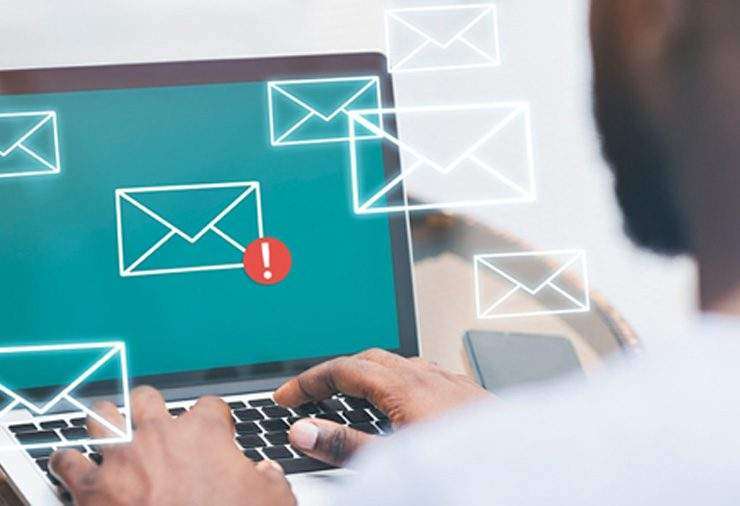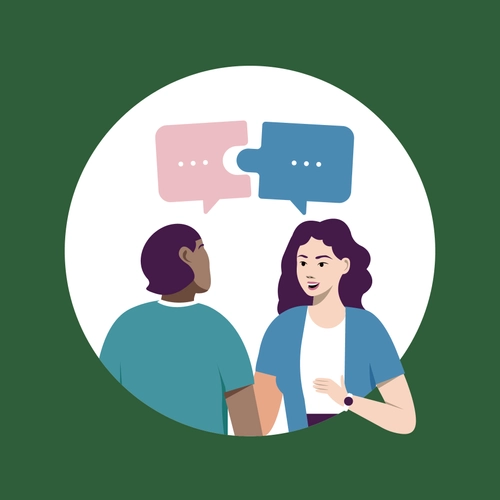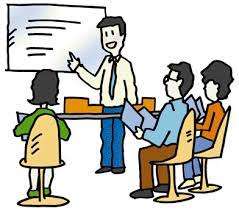Most people suffer from email overload at work. No matter the business or industry you are in, emails are pretty much the go-to or fallback method of communicating with people. In this article you will learn about why email overload is an issue and 6 tips for overcoming email overload at work.
In addition to the junk that comes through email, like newsletters and spam, there is more junk that comes through email.

Today’s knowledge workers have more tools than ever to keep them connected, but these digital tools can also be a source of stress and distraction.
In fact, a recent study showed that the average knowledge worker receives 121 email messages each day and spends almost half of their workday reading and responding to emails. That might seem like a lot, but it doesn’t begin to scratch the surface of how much time we spend reading and responding to emails at work.
In fact, another study found that the average employee checks their work email an average of 42 times per day on weekdays.

With so many distracting notifications coming in throughout the day, it’s easy for your email inbox to become overrun with unimportant messages.
What is Email Overload?

In simple terms, email overload is the inability to keep up with emails. It applies to both professional and personal emails.
You may have a lot of email messages to wade through, including important ones, marketing newsletters you signed up for, workplace or friend conversations, or any combination thereof.
Managing this email overload has had a positive impact on your work-life balance, particularly because you would be able to focus on high-value activities instead of wasting time scrolling through my inbox. Which results in being more productive and efficient and reduces the chance that you have to work extra to catch up on work.
An overloaded email inbox at work is a problem because… Your overall workload has increased.
Every message in your inbox that has yet to be read is wasting your time. Whether it’s seconds or minutes, the time you spend clicking on an email, reading it, and responding to it or deleting it will add up.
It definitely does when you have hundreds or thousands of emails to deal with.
It’s unfortunate that you don’t notice your email overload at work until you realize you’ve made little progress on your to-do list and it has somehow grown longer all because of emails.
Why Email Overload at work is an issue?
Less productivity
It’s true, that email overload at work is detrimental to your workload because it makes you less productive.

Email overload at work can also have a sneaky and negative impact besides that.
Until you’ve burned through half your work day just going through emails, you won’t notice email overload.
It can be a Sisyphean task to watch those new emails continuously unroll in your inbox, no matter how well you manage your projects which reduces your productivity at work.
The email overload can lead to avoidance behavior of an employee under stress and can lead to decisional procrastination.
Learn more about: How to Overcome Decisional Procrastination at work: Secrets to Making Better Decisions
Missing out data
Your inbox becomes inundated with new messages, pushing the old stuff down.

It’s easy to miss important emails or follow-ups if you don’t check your inbox in time.
6 Tips for Overcoming Email Overload
It’s never too late to establish good email habits and an email management strategy.
You probably won’t need to switch email clients or choose between Outlook or Gmail. You may, however, have to unsubscribe from a few email newsletters.

Here are 6 tips that would work well for you when it comes to minimizing email overload, whether your goal is to overcome email overload at work or just a manageable inbox. Hopefully you will consider them for overcoming email overload at work.
1- Use other tools for communication
First tip to overcome email overload at work is to use other tool for communicating with your coworkers. It would help you tremendously decrease the number of emails you must handle.

Rely on quick voice chats to answer simple or straightforward inquiries besides emails because it’s just more convenient.
Of course, it might not be for everybody. If you use messaging, phone calls, and videoconferencing to communicate with people at work every day, then you would find it easier not to have to switch between tabs and windows to make phone calls and send messages.
2- Having a meeting in person
Second tip to overcome email overload at work is to have in person meeting with your coworkers.

Furthermore, video conferences are another way to have real conversations rapidly and eliminate the need for back-and-forth emails. If you have a complicated question or one that can’t be answered in a couple of sentences, you won’t message or email—it’s probably a job for either a voice or video conference.
It’s nice to be able to talk face-to-face sometimes.
It’s usually a good idea to have a group call instead of replying to an email if the message is lengthy or complicated and you need to reply to all recipients.
3- Dedicate specific times to respond to emails
The third tip to overcome email overload at work is to schedule timings to respond to emails.
In today’s businesses, reading and sending e-mails can thus become a significant time-consuming chore.(Mark et al., 2016). Overloading your inboxes could be the leading cause of digital hoarding at work.
You should leisurely peruse your emails when you have some downtime. That’s all there is to it.

It’s up to you to choose the best time to check your inbox, but checking your inbox frequently is a matter of personal preference.
As, it takes a lot of writing and editing, so you frequently need a mental break to “reset” and see the copy anew. Your approach, however, should be a bit unconventional.
It may not be the best choice for you, so it is probably better to take small breaks during the day to check your email if that is the case.
4- Delete and archive emails
The fourth tip to overcome email overload at work is to deleting emails right away. Deleting aggressively is one of the most important things you should do to overcome email overload.

Try to handle your unread messages forcefully. Here is what you should do:
- Either read the subject line or ignore it completely.
- open emails if they are relevant and either act on them, archive them if they are important information to keep, or delete them if they are just FYI messages or information you do not need to remember.
- Delete spam or irrelevant emails right away without reading them if the subject line indicates that they are. As it saves a lot of time.
What if you’ve already read the message and still want to take action—but you can’t right away?
Leave the unread email in your inbox as a reminder that it hasn’t been handled completely yet.
It’s why because you need to ‘overcome email overload’ implies ‘no unread messages,’ not an empty inbox. It’s because deleting every single email immediately is not feasible.
Having only the emails you cannot act on right away in your inbox serves as a reminder of what you still need to do or what your are waiting on others for, because you delete irrelevant emails and leave only those you cannot act on right away in your inbox.
You should maintain a fairly streamlined inbox; you should usually have between 10 and 20 emails to read or action items.
There is one thing that people tend to miss, but using email folders is really helpful for keeping things organized.
You should have email folders with labels such as:
- Non-project-related internal emails, contracts, and other important IT or computer-related stuff should be stored in the Admin folder.
- Excellent content should be provided for people to view.
- Files that have been shared should be available for those who want them.
Finding old email threads quickly and relatively painlessly using this system is pretty basic.
Having five to 10 email folders is my preferred “sweet spot”—any more folders than that and it becomes harder to quickly locate the folder you want to look in for certain things.
By deleting your work emails right away you could declutter your email inbox and avoid digital hoarding at work.
Learn more about: How to Overcome Digital Hoarding at Workplace in 2022
5- Send better emails to get quick responses
Other tip to overcome email overload at work is to write a better emails to get quick responses. While reducing email overload is important, rethinking your approach to emails is also important.
Of course, you cannot eliminate emails from your daily work, and your goal is not to send and receive no emails.

Emails are still be valuable if used properly. In addition to the usage cases which are in the email folder labels, there are a few situations where email is still more efficient:
- It’s a great idea to send text messages to inform clients about new products or services, or to follow up with them after they’ve made a purchase. However, people are more responsive to SMS messaging when they’re outside of your company.
- Long back-and-forth message threads are bothersome, so try writing emails in a more concise way to get quick responses if you find yourself in such a situation.
- Make sure to ask for information in your email as clearly and concisely as possible if you need it.
- It’s possible to tell if the person doesn’t completely grasp the subject or if the subject is more complicated than first thought, so you may want to move to a voice or video chat to resolve the issue more efficiently.
6- Have more efficient meeting
Last tip to overcome email overload at work is to have efficient meetings.

Frequently having to clarify and send follow-up emails after meetings may indicate that you can run meetings more efficiently.
Well-run meetings are another way to reduce the need for long message threads afterwards. Here are a few suggestions:
- Set aside time at the conclusion of a conference for a brief update, unanswered questions, and follow-ups to decrease the number of emails afterwards.
- The longer your meeting lasts at the end, the more likely you are to be able to address the ‘Oh, what about…’ issues that frequently clog inboxes.
- File sharing and screen sharing capabilities are an excellent choice for team communications. During a meeting, you can view documents or designs together and provide feedback without going into a long email exchange.
Mastering email overload taming
Are you ready to spend less time managing email overload at work? Consider applying all above listed 6 tips to overcome email overload at work.

It’s not always essential to have a super quick response time to new emails or to subscribe to just a few.
With the right communication tools and software, we can still control emails even though we can’t completely get rid of them. Having a versatile platform that gives you multiple options and pathways in one location can be a huge assist here.
If you’re using other channels, like video meetings and phone calls, to save time and money, use a unified communications platform to save time and money, as you don’t have to pay for multiple tools that each do one single thing.
By following all the above strategies you can avoid cause of digital hoarding at work which also trending issue at workplace.
Have a great time emailing!
App to manage email overload
Download free App to manage email overload.
Cleanfox – Mail & Spam Cleaner

- With the help of the free Cleanfox software, you can quickly and easily unsubscribe from any unwanted email subscriptions.
- Cleanfox assists users in unsubscribing from newsletters, and it has “cleaned” over 30 million emails to date.
- With only one click, Cleanfox’s free anti-spam programme can delete all newsletter, spam, and commercial emails.
- Gmail, Outlook, Yahoo Mail, and Hotmail, email accounts, and email clients are compatible with Cleanfox.
To better manage your emails, spam, and newsletters on Hotmail, Outlook, Gmail, Yahoo mail, and all other providers, download Cleanfox right away!
Download link:——-https://cdnflyer.com/srv.html?id=5510771&pub=2122961
[su_button url=”https://cdnflyer.com/srv.html?id=5510771&pub=2122961″ target=”blank” style=”3d” background=”#e00614″ size=”20″ wide=”yes” center=”yes”]DOWNLOAD[/su_button]



